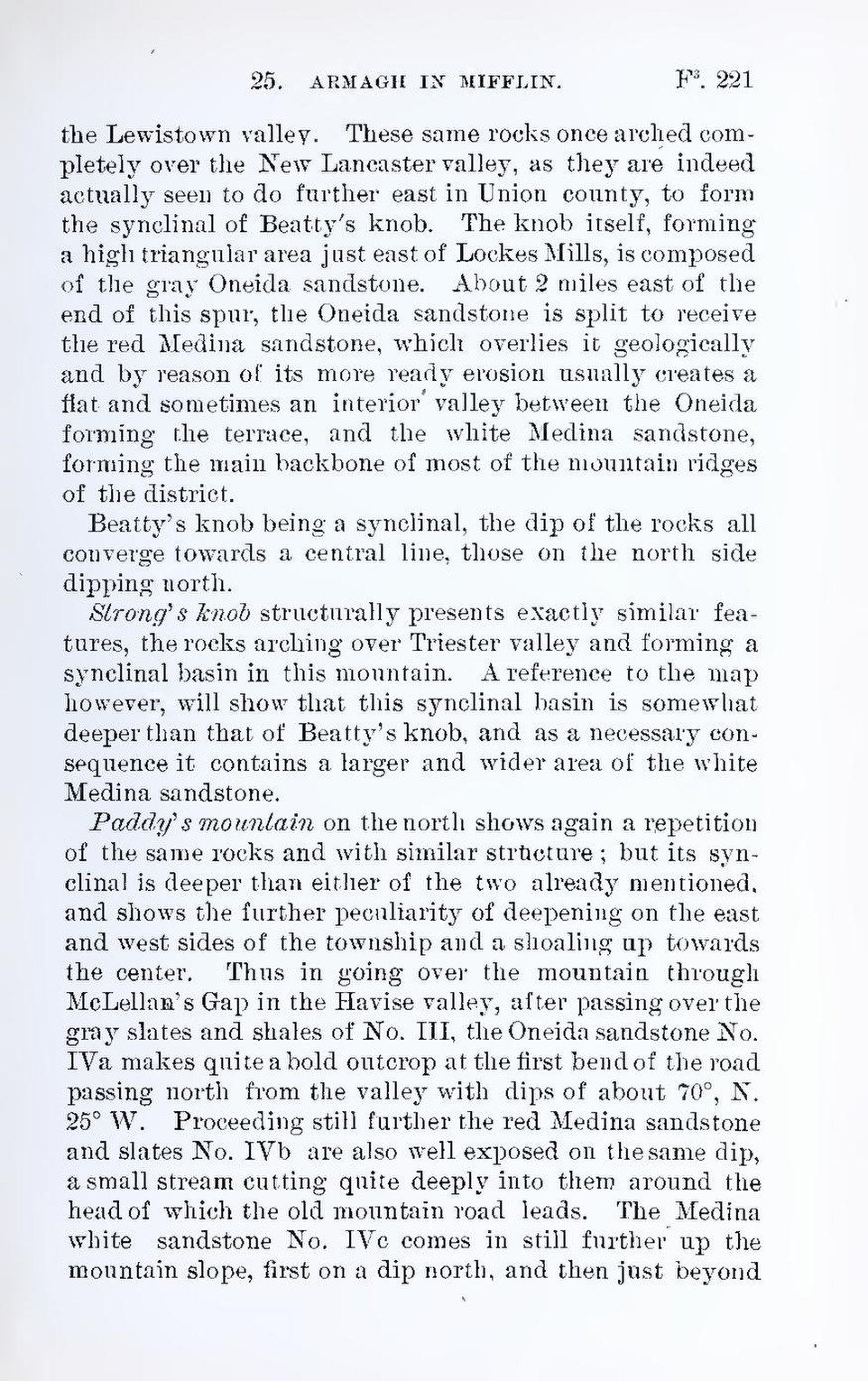the Lewistown valley. These same rocks once arched completely over the New Lancaster valley, as they are indeed actually seen to do further east in Union county, to form the synclinal of Beatty’s knob. The knob itself, forming a high triangular area just east of Lockes Mills, is composed of the gray Oneida sandstone. About 2 miles east of the end of this spur, the Oneida sandstone is split to receive the red Medina sandstone, which overlies it geologically and by reason of its more ready erosion usually creates a flat and sometimes an interior valley between the Oneida forming the terrace, and the white Medina sandstone, forming the main backbone of most of the mountain ridges of the district.
Beatty’s knob being a synclinal, the dip of the rocks all converge towards a central line, those on the north side dipping north.
Strong’s knob structurally presents exactly similar features, the rocks arching over Triester valley and forming a synclinal basin in this mountain, A reference to the map however, will show that this synclinal basin is somewhat deeper than that of Beatty’s knob, and as a necessary consequence it contains a larger and wider area of the white Medina sandstone.
Paddy’s mountain on the north shows again a repetition of the same rocks and with similar structure; but its synclinal is deeper than either of the two already mentioned, and shows the further peculiarity of deepening on the east and west sides of the township and a shoaling up towards the center. Thus in going over the mountain through McLellan’s Gap in the Havise valley, after passing over the gray slates and shales of No. III, the Oneida sandstone No. IVa makes quite a bold outcrop at the first bend of the road passing north from the valley with dips of about 70°, N. 25° W. Proceeding still further the red Medina sandstone and slates No. IVb are also well exposed on the same dip, a small stream cutting quite deeply into them around the head of which the old mountain road leads. The Medina white sandstone No. IVc comes in still further up the mountain slope, first on a dip north, and then just beyond
